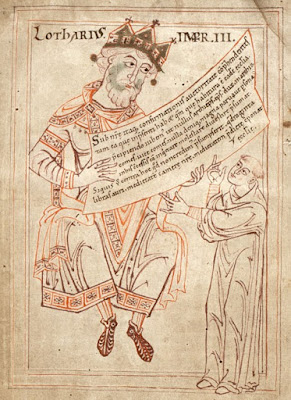By Sharon Bennett Connolly
The inspiration for Scotland’s Medieval Queens came primarily from a conversation with my son after his GCSE English Lit class a few years ago. He was studying The Tragedy of Macbeth and was quite perturbed with the way Shakespeare had portrayed Lady Macbeth. In no uncertain terms, I was told, ‘Mum, you need to set the record straight!’
So, I got to thinking….
I didn’t need much persuading. I have loved Scottish History ever since reading Nigel Tranter’s The Bruce Trilogy many years ago. And, of course, there was The Outlaw King, in which the roles of the women in Robert the Bruce’s life had their roles downplayed or ignored.
All this, and my son and Lady Macbeth gave me the kernel of an idea.
There is not enough information about Gruoch to write an entire book about her, but what if I start with her and develop the idea to include all of Scotland’s medieval queens? If you have read my blog, or Heroines of the Medieval World, you will know of my interest in Scottish history and, in particular, St Margaret, the women of the Bruce family and Joan Beaufort, Queen of Scots as the wife of James I. I already had the beginnings of the book.

Scottish history is fascinating! It is violent, politically charged and passionate. Being inconveniently situated on England’s northern border was never easy for Scotland, but it has made for some great stories over the centuries. Scotland’s story is often that of brother against brother, ambition and family rivalries causing feuds that threatened the stability of the crown itself. Such fissures, of course, grew and ruptured with the aid of English interference and encouragement. The King of England was always happy to play one side off against the other if it weakened Scotland’s position.
And Scotland’s medieval queens, be they Scottish, English, Danish or French, formed a big part of that story.More often than not, these disputes north and south of the border were resolved in peace treaties, sealed by wedding bells. A number of English princesses and noblewomen found themselves married to Scotland’s kings as a consequence.
The longest period of peace between the two countries was in the thirteenth century, when Henry III’s daughter, Margaret, married Alexander III, King of Scots. It is probably unsurprising, given the history between the two countries, that the long peace was shattered by the death of Margaret and Alexander’s granddaughter, little Margaret, the Maid of Norway, which gave Edward I of England the opportunity to direct Scotland’s affairs. Margaret’s death left the Scots throne vacant, with thirteen Competitors vying for the crown, staking their claims as Edward acted as adjudicator.
Suffice it to say, Scotland’s turbulent history is often linked with that of England.
Scotland’s Medieval Queens aims to put the women at the forefront of Scotland’s story, to highlight their role and influence on Scottish history and on Scotland’s kings, culture and landscape. These women, however, did not act wholly independently, so while this book brings their actions into the limelight, it will be always within the context of the wider story of Scotland, from the eleventh to the fifteenth century.
Authors often say their book was ‘a labour of love’ but I have to say, I thoroughly enjoyed every minute of writing Scotland’s Medieval Queens. They were strong, intelligent women who faced their challenges head on. They didn’t always make the right decisions – but who does? But they fought – for their families and their country. Each and every one of Scotland’s Queens was an inspiration and I feel honoured to have had the opportunity to tell their stories.
Author bio:
Sharon Bennett Connolly is the best-selling author of several non-fiction history books. Her latest, Scotland’s Medieval Queens, will be released in January 2025. A Fellow of the Royal Historical Society, Sharon has studied history academically and just for fun – and has even worked as a tour guide at Conisbrough Castle. She also writes the popular history blog, www.historytheinterestingbits.com and co-hosts the podcast A Slice of Medieval, alongside historical novelist Derek Birks. Sharon regularly gives talks on women's history, for historical groups, festivals and in schools; her book Silk and the Sword: The Women of the Norman Conquest is a recommended text for teaching the Norman Conquest in the National Curriculum. She is a feature writer for All About History and Living Medieval magazines and her TV work includes Australian Television's 'Who Do You Think You Are?'
Buy link: mybook.to/ScottishQueens
Social media links:
Website: https://historytheinterestingbits.com/
Podcast: https://soundcloud.com/user-142525904
Facebook: https://www.facebook.com/Thehistorybits
X/Twitter: @Thehistorybits
Instagram/Threads: sharonbennettconnolly
Bluesky: @thehistorybits.bsky.social
Linked In: Sharon Bennett Connolly







.jpg)

















2012.jpg)



